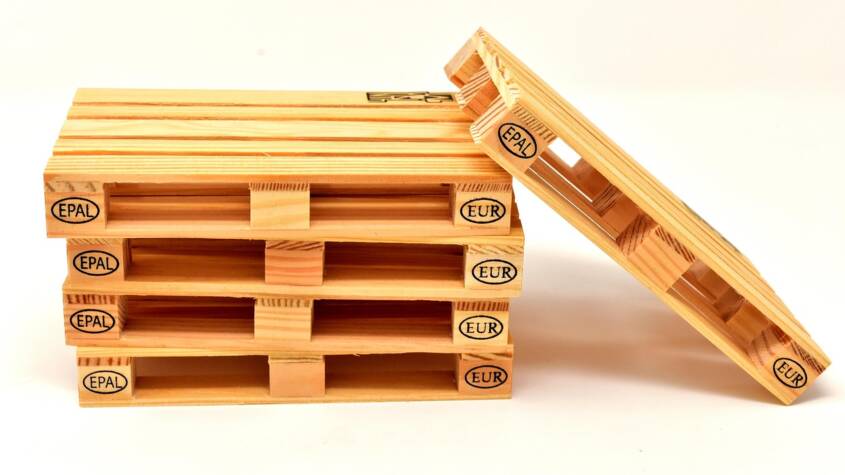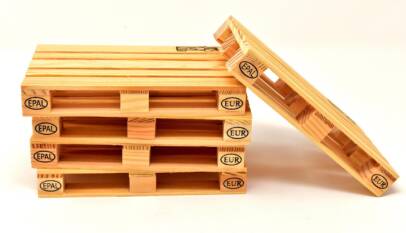
Selling wood pallets can be a simple and profitable way to clear space or generate extra income. Many businesses and individuals seek quality pallets for shipping, crafting, or storage needs, creating a steady market.
The key to successfully selling wood pallets is knowing where to find buyers and how to price pallets based on condition and demand. Understanding the types of pallets and local regulations also helps in making effective sales.
By targeting the right customers and presenting pallets clearly, sellers can maximize their returns. Whether selling in small quantities or bulk, preparation and marketing play a crucial role in closing deals efficiently.
How to Sell Wood Pallets
Best way of Sell wood pallets involves identifying the right buyers, accurately assessing pallet value, and ensuring the pallets are in proper condition for sale. These steps help maximize profit and facilitate smooth transactions.
Finding Buyers for Wood Pallets
Buyers of wood pallets typically include manufacturing companies, shipping firms, recycling centers, and small businesses. Connecting with local warehouses and factories can provide consistent demand.
Online marketplaces like Craigslist, Facebook Marketplace, or pallet-specific platforms help reach a wider audience. Networking with businesses in logistics or retail sectors may lead to repeat buyers.
Contacting pallet brokers is another option. They act as intermediaries and often buy in bulk, providing quick sales but potentially at lower prices.
Determining the Value of Your Pallets
Pallet value depends on size, wood type, condition, and quantity. Standard 48×40-inch pallets are most in demand. Hardwood pallets often sell at higher prices compared to softwood.
Condition matters: pallets free from damage, mold, or contamination command better prices. Quantity affects pricing as buyers prefer bulk purchases.
Prices vary by region but typically range from $5 to $15 per pallet in good condition. Checking local market rates keeps pricing competitive.
Preparing Pallets for Sale
Before selling, inspect pallets for cracks, loose boards, or protruding nails. Repair or remove damaged parts to improve safety and appeal.
Clean pallets by removing dirt, debris, or chemicals to meet buyer standards. Label or stamp pallets clearly if they meet industry regulations like ISPM 15 for heat treatment.
Organizing pallets in stacks sorted by size and condition aids quick inspection and loading. Proper presentation can lead to faster sales and better offers.
Best Practices for Wood Pallet Sales
Successful wood pallet sales depend on selecting appropriate prices and effective advertising strategies. Both steps require careful consideration of market conditions and target customers.
Setting Competitive Prices
Pricing wood pallets involves assessing material quality, pallet size, and current market demand. Most buyers compare prices against local competitors, making regional price awareness essential.
Sellers should factor in costs like pallet repair, grading, and transportation. Offering tiered pricing for different pallet conditions—such as new, refurbished, or used—can attract diverse buyers.
A simple table can help:
| Pallet Condition | Typical Price Range (USD) |
| New | $12 – $18 |
| Refurbished | $7 – $12 |
| Used | $3 – $7 |
Regularly updating prices based on supply changes or fuel costs can maintain competitiveness.
Advertising Your Wood Pallets
Effective advertising targets buyers such as manufacturers, distributors, and small businesses. Using online marketplaces like Craigslist, Facebook Marketplace, or industry-specific sites broadens outreach.
Clear product descriptions should highlight pallet dimensions, condition, and any certifications (e.g., heat treatment). Including photos enhances trust and increases buyer interest.
Local networking with logistics companies or warehouses may secure steady repeat buyers. Flyers or partnerships with recycling centers can also help reach niche markets.
Combining digital ads with direct contact leads to consistent sales and better client relationships over time.
Kids Swimming Lessons Essential Tips for Safety and Skill Development
Kids swimming lessons teach essential water safety skills and build confidence in the wate…








